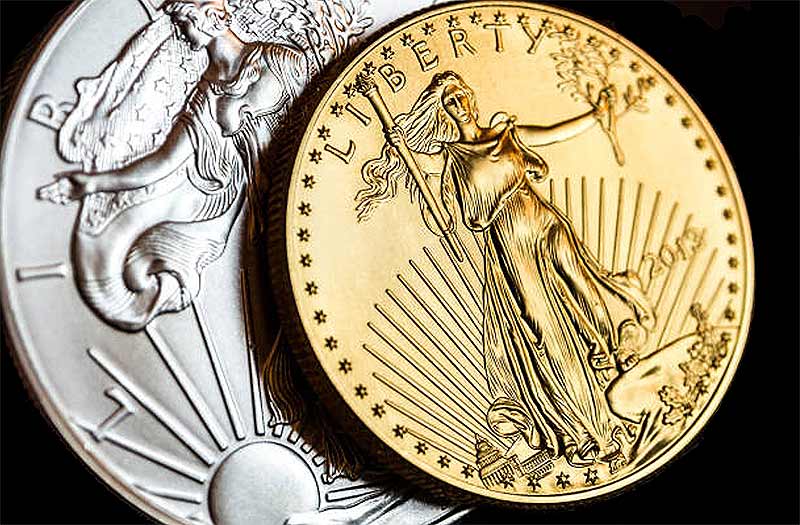Some people say the most important fact in an investment is intangible: security. Most people would say that pouring hard-earned savings into an investment that doesn't offer super high-risk returns is silly. In other words, if you want to know which is safer gold or silver, you need to ask about two things: preservation of initial investment and potential return.
Buying precious metals, for example, gold bars and silver bars can be considered a safer investment due to their historic performance during market declines. Both are known to be popular commodities to hold as a “hedge against the risk of disruptions in the financial market.” Or so says a risk analysis by researchers at UBC states. Compare the purchase of $100 worth of silver coins, to $100 worth of some new blockchain company.
While the technology promises to re-invent the entire global financial system, most people have a hard time even understanding it. The risk involved in a random blockchain company is far greater because you also need to evaluate the company itself. While risk and volatility bring the potential of reward, it just as often brings about failure. Failure, in this case, means the loss of your investment. Moving beyond the dangers of investing generally, let's talk about gold and silver. So ruling out the riskier side of investment, let’s turn our attention to the risk differential between gold and silver.
What Similarities Are Important When Deciding Which is Safer?
As noted, both gold and silver move against the grain. Both precious metals have a long tradition of acting contrary to global currencies and market growth. That is to say, both show signs of volatility when currencies are strong and the markets are moving in an upward trajectory. Likewise, both show a propensity for robust growth while other - more risk-oriented - investments show signs of weakness, or when currencies dip. Both show a small margin of risk in terms of their relationship to overall market forces. Moreover, neither has crashed when the markets were humming along. So even if analysts are calling for a slow year, this could all change at the drop of a hat if the markets flip due to unforeseen political issues affecting precious metals.
Both Have Long History of Stability. Gold and silver have been used in trading and manufacturing for so long. The market cap and potential growth of these metals is more established than almost any other type of investment.
But the Differences Matter So Much More…
Silver Has More Industrial Demand.
Based on past action, the future looks bright for silver because industrial demand is set to rise once again. Goldman Sachs and all the big five banks project silver to outperform gold in 2018 due to increased industrial demand. Demand may increase and the supply will ramp back up again as well.
Price Point Differential.
This is the most obvious difference - and the most important in terms of risk differential. The stock price of silver sits at a fraction of gold, which continues its strong long-term run. Many analysts posit that silver remains under-valued and gold is potentially higher than it should be.
A Financial Risk Assessment on Which is Safer, Gold or Silver?
Has gold has been over-inflated for years because of consumer demand for gold jewelry? That's a hard thing to say. In fact, political events such as government shutdowns have historically positive impacts on gold. This means it is harder to be certain that your investment will bring positive returns. Given current spot prices, making this decision is especially important to any sizeable investment.
Taking these factors into consideration, it is our position that silver has a greater long-term margin of safety than gold. On the other hand, history suggests gold is less volatile. Two overriding factors influenced our decision. The first is that the price of silver allows for much more appreciation than gold. any potential losses are minuscule in comparison to a slight fluctuation in the gold price. This is in addition to the classically noted divergence in the gold-silver ratio: from the low 30s to the higher 70s from 2011 to 2017.
So we know that silver has a proportionally thicker return. The second factor is that industrial demand looks to rise again after a slow year, or at least so say analysts. Rising industrial demand should help insulate silver against significant market value declines. In doing so, at least some people would say your investment is less risky.

